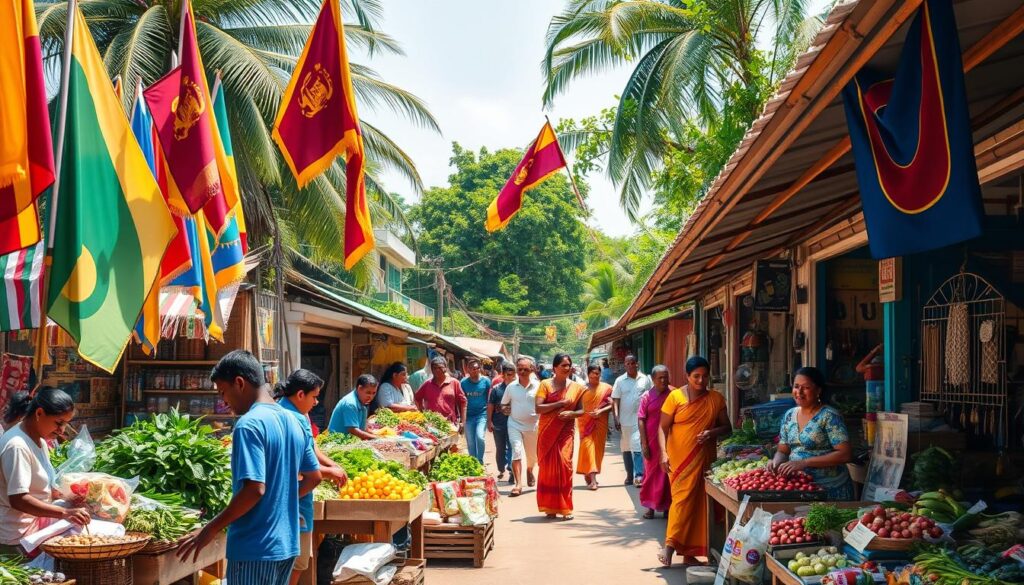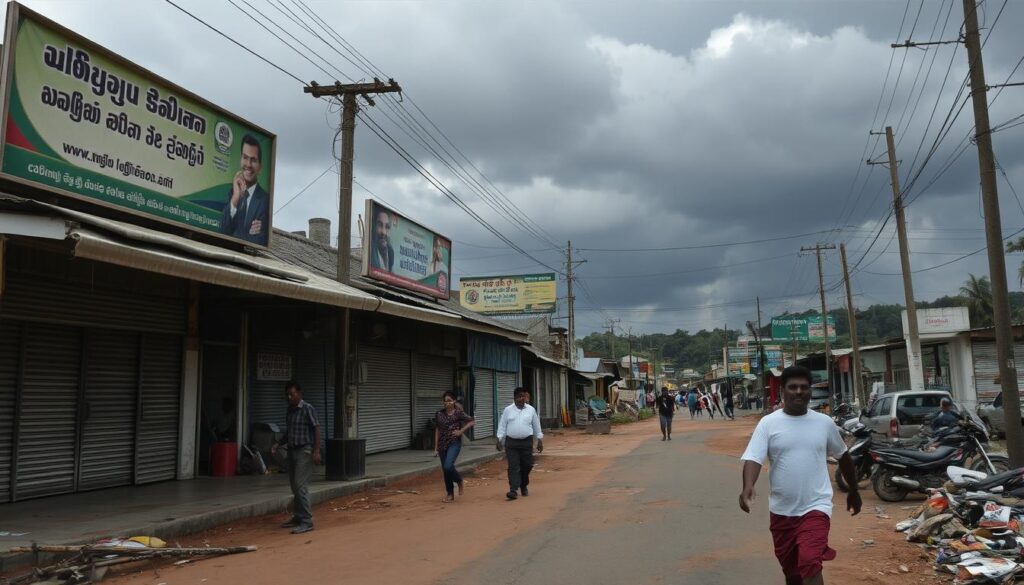Sri Lanka Central Bank Raises Interest Rates 2023
The Central Bank of Sri Lanka has raised key policy interest rates to fight inflation. This move aims to support economic recovery and align with IMF negotiations. The CBSL increased the SDFR and SLFR by 100 basis points each.
This rate hike addresses Sri Lanka’s high inflation, which peaked in September 2022. The economy shrank by 9.2% last year, with inflation hitting 50% in February. The central bank had already raised rates by 950 basis points in 2022.

The CBSL’s decision aligns with IMF staff recommendations. It’s a key step towards securing the $2.9 billion IMF bailout package. Sri Lanka is restructuring its debt before IMF funds can be released.
The country seeks approval under a special Lending Into Official Arrears policy. India and the Paris Club of creditors have offered their support in this process.
These changes aim to reduce the gap between policy and market interest rates. The CBSL expects single-digit inflation by late 2023. They also anticipate a continued decrease in market interest rates.
Stable monetary policies are crucial for Sri Lanka’s economic recovery. They support long-term growth and reinforce the importance of price stability. These measures are essential for sustained economic development in the country.
Central Bank Raises Interest Rates to Combat Soaring Inflation
Sri Lanka’s Central Bank has raised policy interest rates to tackle rising inflation. This action aligns with IMF negotiations and the Extended Fund Facility arrangement. The goal is to reduce the gap between policy and market interest rates.
This move aims to ease pressure on consumer spending and the overall economy. It’s a crucial step towards economic stability and growth.

Monetary Board Decision to Raise Policy Interest Rates
The Central Bank’s Monetary Board agreed with IMF staff to increase policy interest rates. The raise was smaller than initially planned during negotiations. This decision helps fulfill ‘prior actions’ needed for the IMF Extended Fund Facility arrangement.
Standing Deposit Facility Rate (SDFR) and Standing Lending Facility Rate (SLFR) Increased
The Monetary Board increased the Standing Deposit Facility Rate to 15.50%. They also raised the Standing Lending Facility Rate to 16.50%. These changes took effect from March 3, 2023.
This decision shows the Central Bank’s commitment to fighting inflation and stabilizing the economy. It’s a significant step towards financial stability.
| Policy Rate | Previous Rate | New Rate (Effective 03 March 2023) |
|---|---|---|
| Standing Deposit Facility Rate (SDFR) | 14.50% | 15.50% |
| Standing Lending Facility Rate (SLFR) | 15.50% | 16.50% |
Impact on Lending Rates and Cost of Borrowing
The policy interest rate increase will affect lending rates and borrowing costs in Sri Lanka. Higher rates may reduce consumer spending and investment as borrowing becomes pricier.
However, this measure is crucial to control inflation and prevent future economic instability. It’s a necessary step towards long-term financial health.
Reasons Behind the Interest Rate Hike
Sri Lanka raised interest rates to support its IMF-EFF arrangement. This move aims to boost economic stability and attract foreign exchange. It’s part of ongoing talks with the IMF to tackle economic challenges.
The Monetary Board expects this hike to close the gap between policy and market rates. As Sri Lanka restructures its debt, this gap should shrink further. This will create a more stable financial environment for growth.
Negotiations with the International Monetary Fund (IMF)
Sri Lanka is working closely with the IMF for economic recovery. The IMF’s support is crucial for addressing current challenges. Their involvement will guide economic reforms and debt restructuring for long-term stability.
Commitment to the IMF Extended Fund Facility (EFF) Arrangement
The interest rate hike shows Sri Lanka’s dedication to the IMF-EFF plan. This plan outlines steps for economic recovery. Following this arrangement aims to restore confidence and attract foreign investment.
Aim to Lower the Spread Between Policy Interest Rates and High Market Interest Rates
Raising interest rates should help align policy and market rates. This alignment is key for financial stability. As debt restructuring progresses, the rate spread should narrow further.
Conclusion
The Central Bank of Sri Lanka’s interest rate hike aims to ensure price and economic stability. This decision aligns with the IMF Extended Fund Facility (EFF) arrangement. It’s a crucial step towards normalizing the interest rate structure and combating inflation.
The rate increase is expected to quickly slow down inflation. Similar actions by central banks worldwide have shown positive results. The US Federal Reserve and European Central Bank have also raised rates to address rising prices.
Rising rates may challenge emerging economies’ financial stability and capital inflows. However, Sri Lanka remains committed to overcoming these obstacles. The country’s focus on stability aims to create a growth-friendly environment.
The recent surge in Sri Lanka’s agricultural exports shows the nation’s resilience. This growth potential supports the country’s economic recovery efforts.
Sri Lanka’s proactive approach to economic challenges is clear. The Central Bank’s actions and commitment to the IMF arrangement demonstrate this. These efforts position the country well for sustainable growth and a prosperous future.




